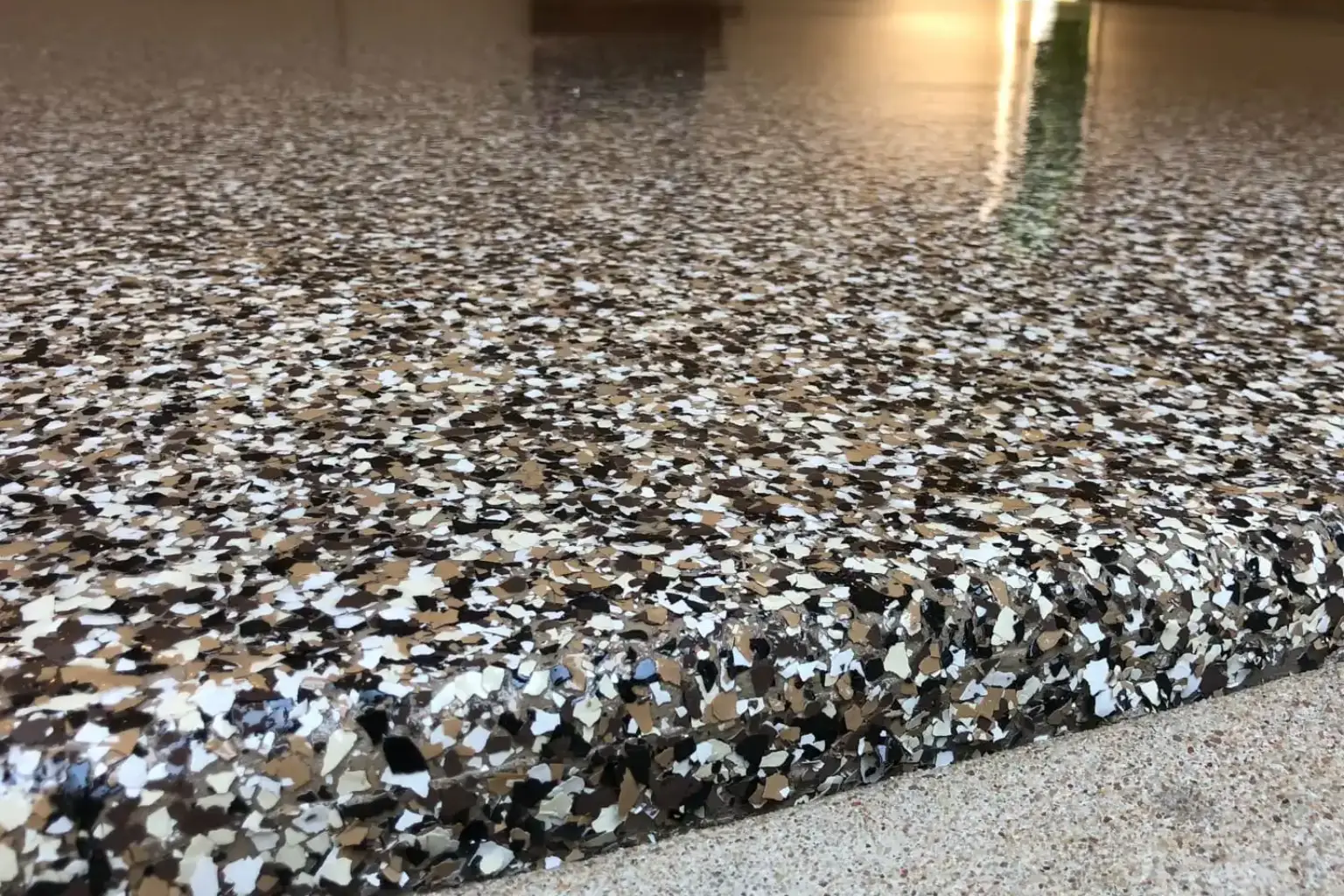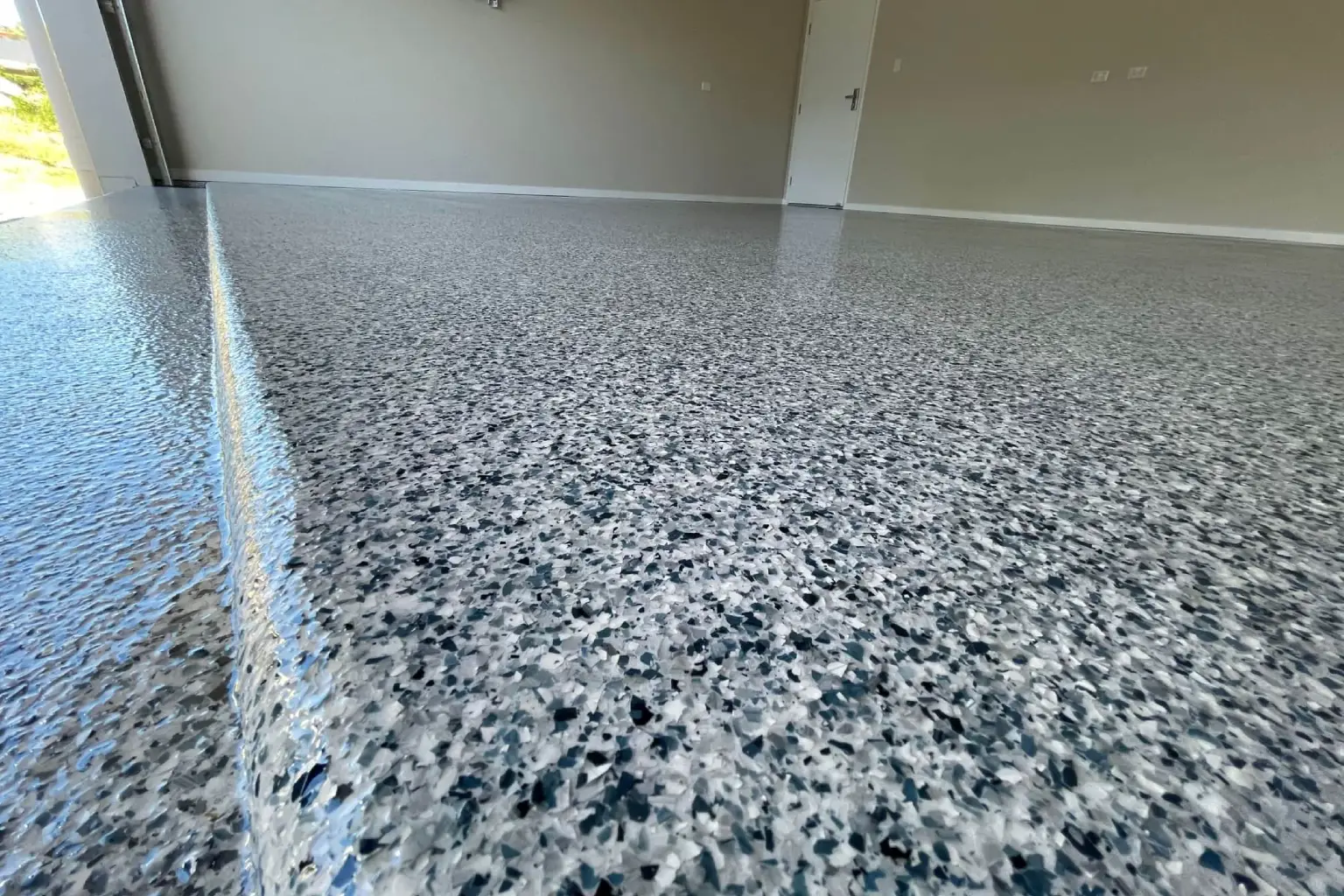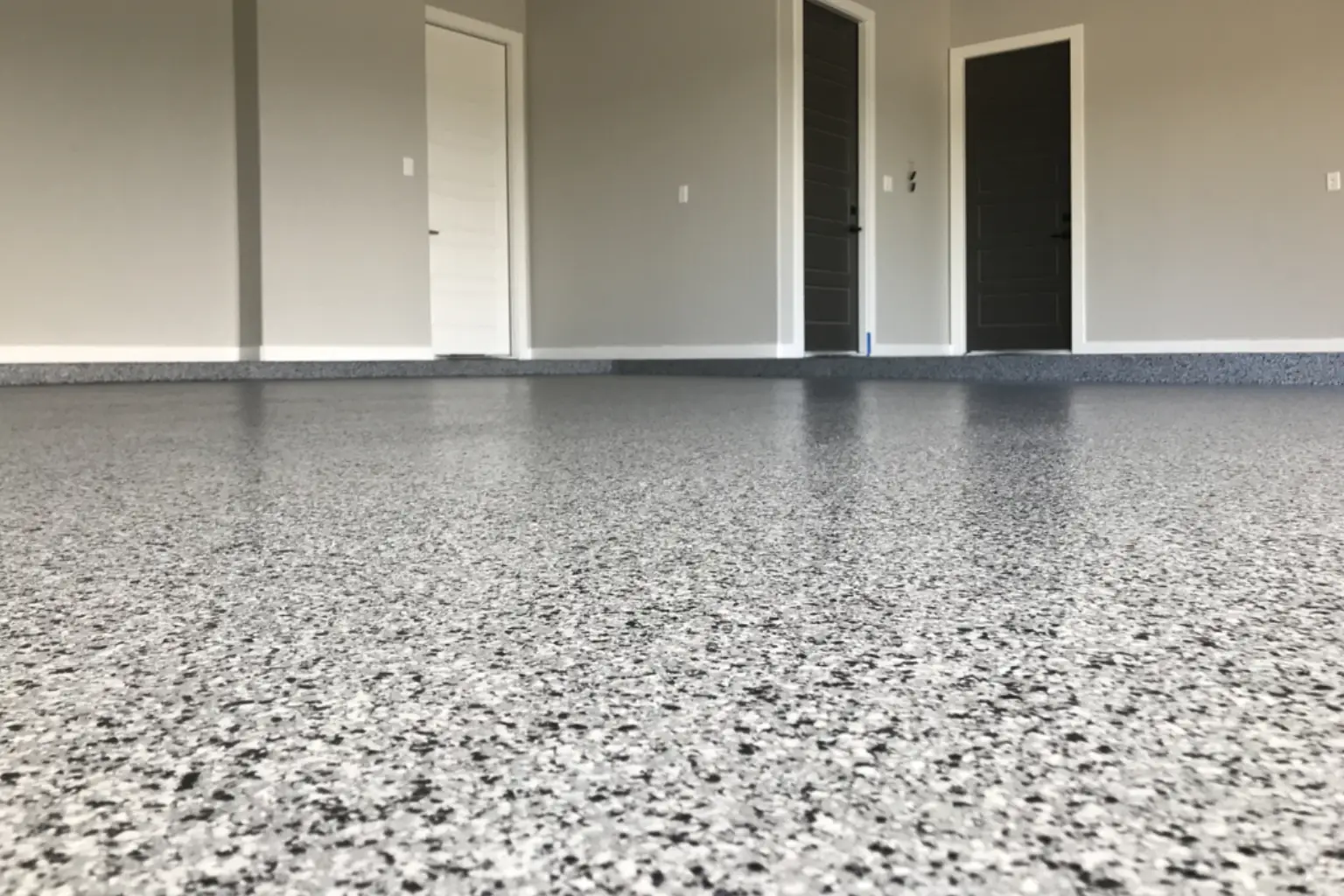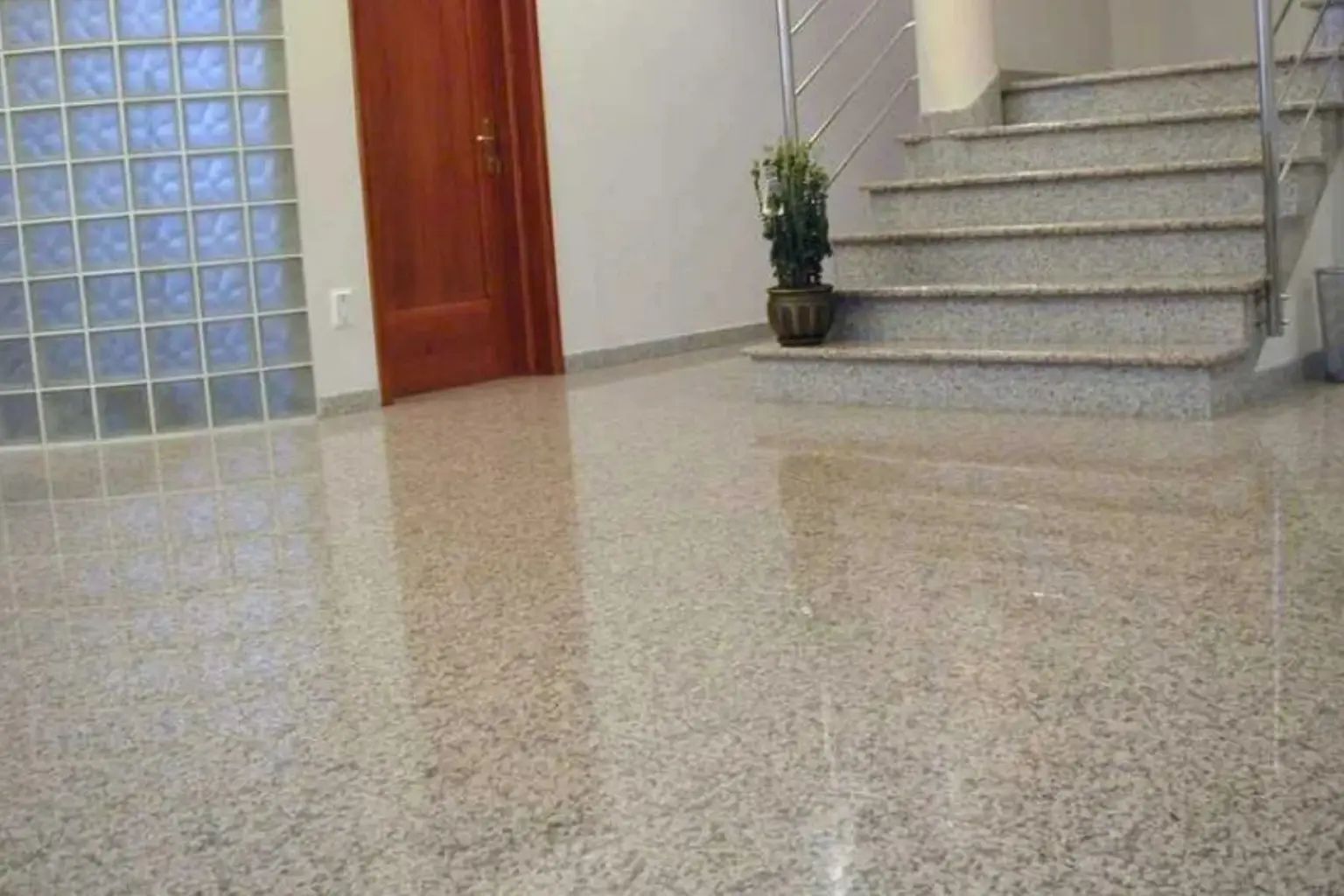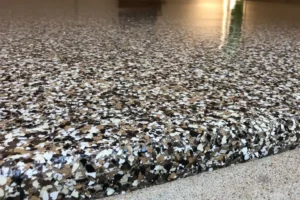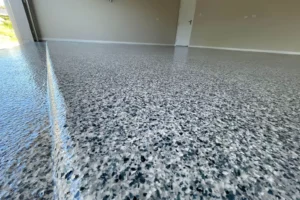Polished concrete floors are growing in popularity in both residential and commercial environments. They provide a sleek, modern aesthetic for many design styles. Unlike conventional flooring, concrete floors have several pros as they’re exceptionally durable and require very little upkeep. However, they also come with some limitations.
Several customers, including homeowners and business owners, are favoring this option because of its beauty and practicality. A polished concrete flooring finish, in the right space, can look very clean, bright, and stylish. This article discusses the pros and cons of Polished concrete in detail to help you make an informed decision and steer clear of any limitations:
What Are Polished Concrete Floors?
Polished concrete floors are typical concrete floors that are treated through a special finishing system to cause them to be shiny, smooth, and attractive. Polished concrete floors are very popular with homeowners and businesses because they look sleek and modern, and they are easy to clean.
The polish is achieved through a concrete polishing system that utilizes machines with diamond tools to grind the surface and polish it. The process can be repeated over and over until the surface becomes harder and more reflective.
Polished concrete floors look stylish and last long. The polishing makes them resistant to stains, scratches, and heavy use.
How To Polish Concrete Floors
Knowing how to polish a concrete floor allows you to understand the process they use to achieve its smooth and glossy finish. Most likely, first the surface will be cleaned and then prepared for concrete polishing. Any cracks or holes in the concrete floors should be filled before polishing begins.
Next, the concrete polishing system is utilized. This is a large piece of equipment that utilizes diamonds bonded to heavy machines with grinders.
Every process grinds the surface from coarse to finer, one step at a time. After several passes, the surface becomes polished to a shine or even glossy. During this process, either a sealer or densifier is used to enhance the installed polished concrete flooring.
Some people try the DIY polishing concrete floors option, but it can be difficult without the right equipment and training. The polished concrete equipment is routine and does require skill to operate properly.
Pros of Polished Concrete Floors
Durability and strength, concrete floors are sturdy and provide durability to handle excessive foot traffic without damage. Here are the pros of polished concrete in detail:
Durability and Strength
Polished concrete flooring is extremely durable and resilient. When compared to soft surfaces like wood and vinyl, concrete can sustain heavy foot traffic, the movement of furniture, and even machinery with minimal wear and tear. This is what makes it an ideal option for retail stores, warehouses, offices, and even busy homes.
Because of its weight-carrying capacity, it is much more resistant to scratching and denting, and chipping compared to most types of traditional flooring. If your polished concrete is maintained properly, the flooring can last for decades as long as you keep up with wear and tear.
Low Maintenance
Once a concrete floor has been polished, there is much less maintenance compared to other types of floor coverings. Polished concrete does not require the special maintenance required for carpet (such as dry cleaning) or hardwood floor (such as refinishing).
Polished concrete can be quickly cleaned with a simple sweep or mop, or a simple floor cleaning machine can be used for larger surfaces. There is no dusty top surface that houses allergens, and concrete flooring is an excellent choice for people with allergies.
There is no need to frequently apply waxes or other coatings, making it a time-saving effort and a true cost advantage in maintenance and sustainability.
Aesthetic Appeal
Polished concrete floors have a modern and contemporary look that works in both residential and commercial spaces. With multiple options such as flake and metallic finishes, they have a shiny, reflective finish, which can add light to a room by reflecting natural light and artificial light.
Eco-Friendly Option
Polished concrete is an eco-friendly flooring option. Instead of adding new materials like wood or vinyl, you simply polish the existing concrete slab. You will have less waste produced because you are not creating building materials and using fewer raw materials.
Polished concrete will greatly improve the interior lighting in a space by reflecting more light and keep your energy consumption reduced because you are lessening the need to use additional artificial lighting. This will save energy, and passive green projects could generate points for sustainability for the green building.
Lower Costs
One of the key benefits of polished concrete floors is their cost advantages. The initial cost of polished concrete is that it is usually cheaper than installing hardwood, tile, or carpet. Due to the durability of polished concrete, it also minimizes replacement and repair costs.
If you also factor in lower maintenance needs that help reduce cleaning costs, polished concrete is one of the most cost-effective flooring solutions in the long run and requires fewer repairs than wood, tile, or carpet.
Cons of Polished Concrete Floors
Polished concrete floors have their respective cons that you must understand to make them serve your flooring needs for a lifetime:
- Wet polished concrete can be slippery, making it unsafe for areas like kitchens and bathrooms or entryways.
- With polished concrete, sounds are louder because the surface does not absorb the sound.
- Installing polished concrete usually needs skilled professionals, which can increase the overall expense.
- Polished concrete can be very heavy, which means that if you are on an upper floor, it may not be practical without additional structural support.
- Direct sunlight over time may lead to fading or discoloration on some finishes of polished concrete.
- Repairing polished concrete can be tricky. You may need to re-polish large sections instead of just the section you want to have repaired.
When installing polished concrete, make sure you hire epoxy flooring professionals for proper installation and to ensure that your flooring serves you for a lifetime.
Where Polished Concrete Flooring Works Best
Polished concrete flooring works well in many spaces. In homes, it looks great in living rooms, kitchens, and basements. The smooth surface is easy to clean, and the glossy finish adds a bright, modern style.
Various polished and stained concrete flooring types work best in commercial businesses and warehouses. They can withstand heavy use, thousands of footsteps, machinery, wear and tear from daily use, and more without being compromised. Many businesses choose these floors because they are durable and budget-friendly.
Having a concrete polishing system is especially beneficial in high-traffic areas, as it is very durable. A stained concrete surface can resist scratches, staining, and surface damage to the flooring. This makes polished concrete a great place to put in schools, offices, and retail stores as well.
Conclusion
Polished concrete comes flooring provides durability, style, and little maintenance. Although there are downfalls to consider, many of the benefits outweigh the disadvantages. With proper care, polished concrete floors can last for decades, and they are a great investment for a home or a business.


